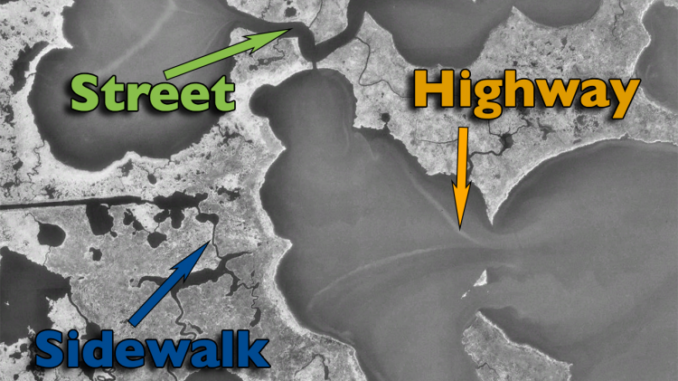
Fish use ‘sidewalks, streets and highways’ to travel and chase bait
It’s easy to look upon Louisiana’s prairie marsh and only see a bunch of grass and water.
But a closer look reveals there’s much more to the eye: It’s a complex and thriving ecosystem.
As inshore anglers we need to understand this system, because that kind of understanding will help us enjoy fishing. Gaining that kind of knowledge can be tough, but this simple analogy breaks it all down in an easy-to-understand way that will help you catch more speckled trout and redfish.
Highways, streets and sidewalks
Understanding how water moves through the marsh is everything, because without moving water you don’t have a fishing trip.
Louisiana’s best anglers possess this understanding, knowing when and where tidal waters will move best.
How most see the marsh
If you only fish spots — and not conditions — then chances are you see the rest of the marsh as just places that ‘aren’t your spot.’
It’s all just water you use to get to where the fish have always been — or maybe not.
But if you saw each body of water in the marsh as being like a path for fish to travel, and categorized them according to the traffic they can bear, then you’d see new opportunities to catch more fish.
A new way to see the marsh
Each body of water is used by marine life to travel from one area to the next, and can be classified by the amount of traffic they receive:
• Sidewalk
• Street
• Highway
So a trenasse bleeding into a pond would be a sidewalk, the bayou upon which the pond sits would be the street and the nearby pass where the bayou is situated would be the highway.
Check out the pictures above to get a better idea of how the fish might move around.
How this knowledge benefits you
This understanding of how water moves through the marsh reveals spots that are worth trying because they might yield great catches at certain times.
One example
Every spring and fall we have a mass exodus of shrimp from the marsh. They leave for saltier water to procreate and, as they do, are ambushed by speckled trout and redfish.
Using this highway analogy, it’d be a lot easier to guess where we should begin fishing, wouldn’t it?
It would. Because we would know where they are traveling, and how they will travel there.
Good examples of places to try fishing would be large points in big, open water.
A poor example would be a single trenasse.
The difference is that more water flows across one than the other, and more water equals more bait — which equals more predator fish like speckled trout and redfish for us to catch.
Conclusion
I wanted to introduce this idea so you might gain a better understanding of your current honey holes, and how to locate new ones.
Fall is right around the corner, and some of the best fishing of the year will come with it. Tight lines, y’all.
Editor’s Note: Capt. Devin Denman is an avid inshore angler who writes the Louisiana Fishing Blog. To read more of his articles, visit lafishblog.com.


